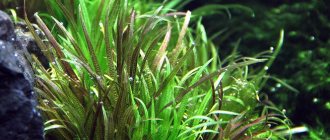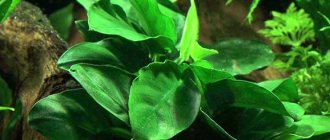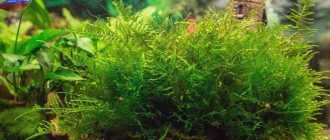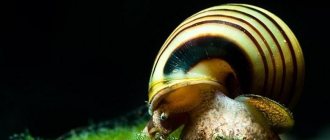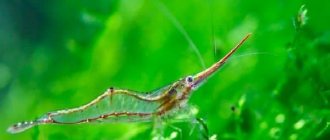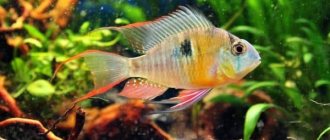For aquarists - both experienced and beginners - Heteranthera aculifolia evokes only tender feelings. It is no secret that most beautiful aquarium plants are quite capricious: either the soil is not suitable, or the water is not of the right softness, or it is almost impossible to plant them. Of course, the heteranthera also has its own specific preferences, which are worth knowing and taking into account, but it does not require any special conditions, does not cause any trouble, decorates and landscaping the aquarium perfectly, provides shelter for the fish, and, thanks to its unpretentiousness, leaves enough time for their owners to admire their pets . It is not for nothing that aquarium fans actively and enthusiastically recommend this particular plant to beginners.
What does heteranthera aculifolia look like?
This is a very delicate, beautiful plant with long (up to 40-50 cm), fragile stems and narrow lanceolate-shaped leaves of a light or bright green hue.
The average leaf length is 7 cm, width 0.5 cm. Its roots are thin, white, and underdeveloped.
Heteranthera aculifolia is often confused with Eichhornia diversifolia. These are relatives, they are very similar in appearance, but still they are different plants.
The main difference between them is that the first has straight or slightly wavy leaves, while the second has arched leaves, reminiscent of a palm tree.
Compatibility with fish
High adaptability, the ability to exist in a wide range of water parameters and resistance to mechanical damage make nana an almost universal companion for most fish.
It can be used when decorating cichlids and aquariums with herbivorous fish: the tough plant is too tough for any inhabitants, and those fish that dig the soil cannot damage the strong root of the bush.
But a mechanical suspension is quite capable of harming it. Therefore, in an overcrowded aquarium, where there is no proper level of filtration, the pores on the leaves of the plant quickly become clogged, which can lead to its death.
Therefore, in containers with goldfish, livebearers, and armored catfish, moderation in feeding the fish should be observed and a large percentage of the water should be regularly replaced.
Anubias snails are not scary. They don't bore holes in this plant.
It should be remembered that nanas prefer dim light, so they will feel great in aquariums designed for twilight fish, in particular catfish.
Dwarf anubias successfully tolerates low temperatures and can easily live in containers with cold-water inhabitants, in particular, discus fish.
Rules for keeping an aquarium
Heteranthera aculifolia is a relatively hardy plant that can be kept at a water temperature of 22-26°C. When the temperature decreases, it will grow more slowly, and its appearance may be distorted. To get a luxurious bush, keep the water temperature above 20 degrees at any time of the year. The water in the tank is recommended to be of low hardness and low acidity. In hard water, old leaves quickly deteriorate and die; only large leaves in a rosette can survive from the plant, their appearance will be unsightly.
This type of plant prefers infused, “old” water. You can add a little peat to the pond, which will acidify the soil and water. It is better to change the water regularly, topping it up as it becomes dirty or evaporates (20% of the aquarium volume). Avoid the appearance of suspended particles and debris; heteranthera aculifolia loves cleanliness; dirt residues accumulated on the leaves quickly deteriorate.
The lighting of the tank should be bright - if there is not enough light, the stem stretches, the distance between the leaves increases, which deforms the appearance. The amount of daylight is 12 hours, under such conditions the leaves grow large, there are many of them, which makes the plant lush and luxurious.
The light rays must reach the bottom of the aquarium so that the lower leaves can receive enough light. To do this, you will need several 0.5 W fluorescent lamps.
Heteranthera aculifolia gets its nourishment from water and absorbs what dissolves in it. It can grow in any type of soil; the thickness of the substrate layer does not matter, as does its saturation with fertilizers. Heteranthera can be grown in any type of soil, it is important that it takes root in it. In fresh, “new” water, the biological balance is not established; it is poor in beneficial bacteria and microelements, so the plant will not be able to develop in it. It is better to add liquid fertilizers to new water at the rate of 2-3 mg per 100 liters of water. A great way to saturate a plant with useful substances is to plant it in a tank where fish and other types of plants live.
Interesting features
In optimal environmental conditions, star grass grows and develops all year round, the average increase in green mass in one week is on average about 5 cm. Also, this hydrophyte is suitable not only for keeping in artificial reservoirs, but also in wet greenhouses. However, it is worth considering that it can only exhibit its decorative qualities in an aquatic environment.
Other varieties of this plant are also grown in aquariums, namely:
- kidney-shaped (Regiformi);
- Heteranthera angustifolia;
- callifolia (Callifolia).
In optimal environmental conditions, star grass grows and develops all year round.
They differ slightly from each other in their appearance, but require identical care and maintenance conditions. You can purchase such algae in online stores or special departments that deal with aquariums and accessories for them. The price largely depends on the region of sale, so some points offer heteranthera branches for 40-60 rubles, while Moscow shops ask for at least 200 rubles. for the same planting material.
For experienced and novice aquascapers, this hydrophyte evokes only tender feelings and pleasant memories. Many people know that ornamental plants for artificial reservoirs have high demands and are quite capricious. You constantly have to adapt to them: either the soil has an unsuitable composition , or there are not enough nutrients or the water is too hard, and it is almost impossible to plant and propagate them.
Of course, stargrass also has certain requirements and preferences, which are important to know and take into account when arranging aquariums, but it does not require special conditions and usually does not cause any trouble when caring for it. Heteranthera serves as an excellent decorative decoration for aquariums and provides fish with excellent shelter in its dense and lush thickets. It is not surprising that aquarium lovers so actively recommend that beginners acquire this plant.
Heteranthera aculifolia in aquarium design
The value of this plant is due to the fact that it actively branches, forms dense groups on its own, and at the same time grows not upward, but to the sides. It is better to keep it in medium (about 150 l) low aquariums.
Otherwise, especially in moderate lighting, the lower part of the stem begins to become exposed, shedding leaves and losing its decorative effect. If this happens, then there is only one way out - to tear off the tops and replant them in the ground.
- The optimal place for a heteranthera is the background. Some experienced aquarists advise planting it there on both sides and using lighting to give it a diagonal slope to the side walls, claiming that it looks very beautiful.
- You can also place it in the center of the aquarium, but only if it is trimmed regularly, otherwise the pond will visually look like it has been cut in half.
- It is possible to bring the heteranthera even to the foreground, but then you will need to trim it twice a month.
This plant looks especially beautiful in contrast with red-leaved species.
Lifehacks and tips for aquarists
- Aquascapers advise using lighting to regulate the growth of Heteranthera aquifolia. This allows you to get an interesting design effect. For example, plant bushes on the sides of the aquarium and use light to tilt them towards the walls. Also, to create a bright composition, it is better to plant heteranthera next to plants of rich red color.
- Owners of Heteranthera zosterifolia note that the plant feels most comfortable in wide, low aquariums. If you plant it in a container with high walls, you may encounter a lack of light flux, which is why the plant will begin to stretch upward and wither instead of forming a lush, healthy bush.
- It is not advisable to plant the holly heteranthera in aquariums with shrimps and actively digging fish. Digging up the substrate will negatively affect the root system of the plant, which can cause it to die. It is better to give preference to a Dutch aquarium, or one inhabited by quiet “lazy” fish.
Lighting
The lighting should be bright enough. With a lack of light, Heteranthera aculifolia not only becomes very elongated, but its leaves quickly become smaller. Lighting can be either natural or artificial. In large deep aquariums for heteranthera it is advisable to arrange side lighting.
The length of daylight hours can vary widely and depends on the intensity of light. The plant is best kept in an aquarium with light-loving hydrophytes.
Variations and forms of the plant
In aquariums you can also find other varieties of plants that require almost identical conditions.
- Kidney-shaped. Found in North and South America. Unlike the holly heteranthera, it does not grow well in an artificial environment. Aquarists also note that the plant may die off in winter. Has long developed roots. The leaf blades are similar in appearance to the buds, which gives the name to this variety of heteranthera. Peduncle; under good conditions, small blue flowers are formed on the plant.
- Callifolia. Grows in African waters. It is less popular among aquarists compared to stargrass. One part of the leaves of this heteranthera is located in the air, the other is submerged under water. The surface leaf plates are fleshy and denser, and have a rounded shape. Submerged leaves are longer and pale green.
Reproduction
Heteranthera aculifolia is easy to propagate by cuttings. To do this, take the apical shoot or the middle part of the stem with a well-defined lateral shoot. The cuttings can be left floating near the surface until they form roots. When floating, the heteranthera grows somewhat more slowly, but retains the same shape. Heteranthera can be kept in a humid greenhouse, but this is usually not practiced, since specimens grown in the air do not have much decorative value.
Description
Heteranthera aculifolia is a very delicate long-stemmed plant with light green narrow leaves. The stems can reach a length of 40-50 cm, but, nevertheless, the heteranthera is more suitable for a small aquarium with a low water level, since in deep aquariums the lower part of the stem sheds leaves and loses its decorative effect. In this case, the tops of the plant have to be torn off and replanted in the ground. Heteranthera is quite widespread among aquarists, since it is relatively undemanding in terms of keeping conditions. It grows evenly throughout the year.
Feeding
Gourami are indiscriminate when it comes to nutrition. These are omnivorous fish. In the wild, it feeds on insects and their larvae. And not only by underwater insects, but also by flying above the water. The gouramis knock them down with a stream of water from their mouths.
When kept at home, it feeds on live and frozen insects (bloodworms, tubifex, brine shrimp), and special fish food. It also uses parasites as food - hydra, planaria. Additional products include finely chopped meat and herbs (dandelion leaves, lettuce leaves, midge).
The fish feeding regime is not too strict. They are able to go without food for one to two weeks. But it is advisable to feed them every day or every other day.
